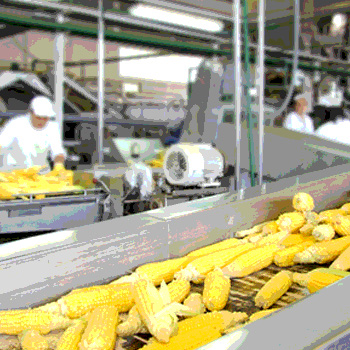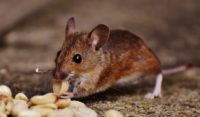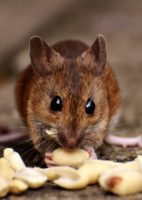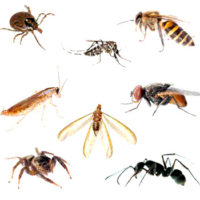Pest management is rather unique in comparison to the other services offered to a food facility because cooperation between the pest management provider and client is so critical to the program’s success. Both client and pest management professionals (PMPs) play an important role in pest elimination. The program works best when there is a shared role and responsibility on the part of both teams. I often wished we had a McCloud Services partnership award for our clients who partner well when it comes to pest management. Perhaps the benefits in food safety are award enough.
There are three basic requirements in developing a solid pest management program relying on collaboration between the pest management firm and the food processor. Whether it is small fruit flies or stored product pests, there is an essential connection between sanitation and the development of these pests in food facilities. Elimination of the food source is critical to effective and long-term control of these pests. The second major pest management component is exclusion to keeping pests from entering a facility. The third is structural integrity and design. Both structural integrity and building design will have an impact on sanitation and exclusion. In this article, I will focus on some examples where the client and PMP partnership were essential in getting control of food related pests.
Partnership Basic #1: Removing Pest Food
Sanitation is important in removing food which can provide a life sustaining resource for pests. Food facilities will always have some food availability due to the nature of the business, but we must strive to remove the easily accessed food (nonpackaged) and long-term accumulation of food. The longer a food source remains on site, the more likely it is to become infested. Open food is more likely to be exploited than sealed and packaged. Spills and product accumulations in equipment, racking, beams and floor cracks are more likely insect targets than food in a well-sealed bag. Depending on the life cycle of the pest infesting the product, a long-term accumulation could be defined as 1 week (flies) or 6 months (stored product pests). The larger filth flies don’t normally breed inside most food facilities. It is much more common for them to breed outside and enter through open doors, windows or vents. They need wet organic matter for survival which under most interior sanitary programs is regularly removed. One area where wet organic matter is common is the exterior dumpster compactor. Even in a dry processing facility, it is possible for the dry ingredient wastes to become moist when discarded in an exterior dumpster. Wet organic material in and around a dumpster can provide food sufficient to complete the life cycle. In addition, the area underneath the dumpster/compactor can be a difficult to clean.
During this past summer, we had a client who had both bottle flies and house flies breeding underneath and inside their dumpster compactor unit. When the dumpster was removed, maggots and fly pupal cases were found inside cracks and crevices in the concrete pad. The cracks and crevices were treated with an insecticide and an insect growth regulator. Ultimately, cleaning the dumpster when removed by the trash handling company was required to break the life cycle. There was a minor additional charge incurred but the simple emptying of the dumpster was not sufficient alone to stop the fly life cycle and insecticides could not overcome the sanitation issue. It was critical to obtain the cooperation of the client in getting the area cleaned and supplementing with insecticides. In addition, coordination with the client was needed to be present during dumpster removal and coordination of inspection of the area and any supplemental pesticide applications.
Partnership Basic #2: Keeping Pests Out
When most food plant professionals consider pest exclusion, they think of doors, windows, vents and the inspection of incoming goods. All of these are important components of pest exclusion and do provide a line of defense against pests. However, there is another way that pests can enter a food facility and that is through the sewer system. Rodents, roaches and flies can make their way into a facility through these access points. Sewers and drains must be looked at as part of the exclusion process.
The American cockroach commonly lives outdoors in warmer climates but in the north, when it enters structures, sewers are the more common entry point. Cockroach baits and other forms of pesticides can control the pest, but preventing access through sewers and drains can be a much more effective and provides a longer tem control solution. The exclusion of sewer and drain routes requires assistance from the food processor.
Over the years, we have had many clients in urban areas where American cockroaches were causing issues via the sewer system connections. The pests were moving through sewers and drains into office areas as well as foodservice areas. The simple act of capping unused drains can provide relief in areas where the drains are not required for water management. Screening through the use of special drain inserts can be used when drainage is required. There are screen baskets and one-way flow “plugs” that can be used to seal these access points when capping is not an option. Simple duct taping on a temporary basis can be done to see if capping or screening drains can be helpful. Care must be taken in making sure that flooding of floors is not an issue when drain capping, either temporary or permanent is done. However, this attention and stemming of the routes of entry has provided numerous success stories. It required communication and client support in getting this issue solved.
Partnership Basic #3: Smart Design
Proper design of a structure with cleaning and maintenance in mind is the first step in reducing pests. As indicated previously, design will impact both the ability to clean the facility to remove food sources and increase the ability to properly exclude pest entry. Maintaining that structural integrity over the years through building wear and redesign is an ongoing process. The initial cost on making changes in structural design can be quite expensive and often are the most difficult to get accomplished for this reason. It is far better to start with the right design than have to redesign later. Nevertheless, sometimes redesign is needed to ultimately get control of pests.
One area of design that we have seen in multiple pest inviting situations is the use of plastic lined insulation over corrugated walls and roofs. Typically, this is plastic-lined fiberglass insulation is placed over an outer corrugated wall, leaving the plastic outer layer exposed on the interior. This can be particularly problematic in dry processing facilities where heavy dust accumulations can make their way into walls. This construction type is also conducive to rodent burrowing and rodent activity in all types of facilities. Both rats and mice can easily access and tunnel through this type of insulation, especially when there are breaks in seams. Ultimately, removal of the insulation is needed in solving rodent infestations in this insulation when rodent numbers are high. Trapping can be difficult and produce inadequate control results when rodents have an extensive tunnel system within the insulated walls in which to travel. Similarly, this type of construction can harbor stored product pests if food residues are allowed to accumulate in tears or breaks in the insulation. Clients who have been willing to make this structural design change in removing the insulation have been instrumental in solving the resulting rodent issues.
Patricia Hottel is the technical director for McCloud Services, known for its integrated approach to pest management, specifically designed for the foodservice industry. Serving the largest food-related brands in the U.S., the company has earned a reputation as the “food protection experts.” McCloud Services has locations in ten states with five service centers in Illinois. For more information, please visit www.mccloudservices.com.




